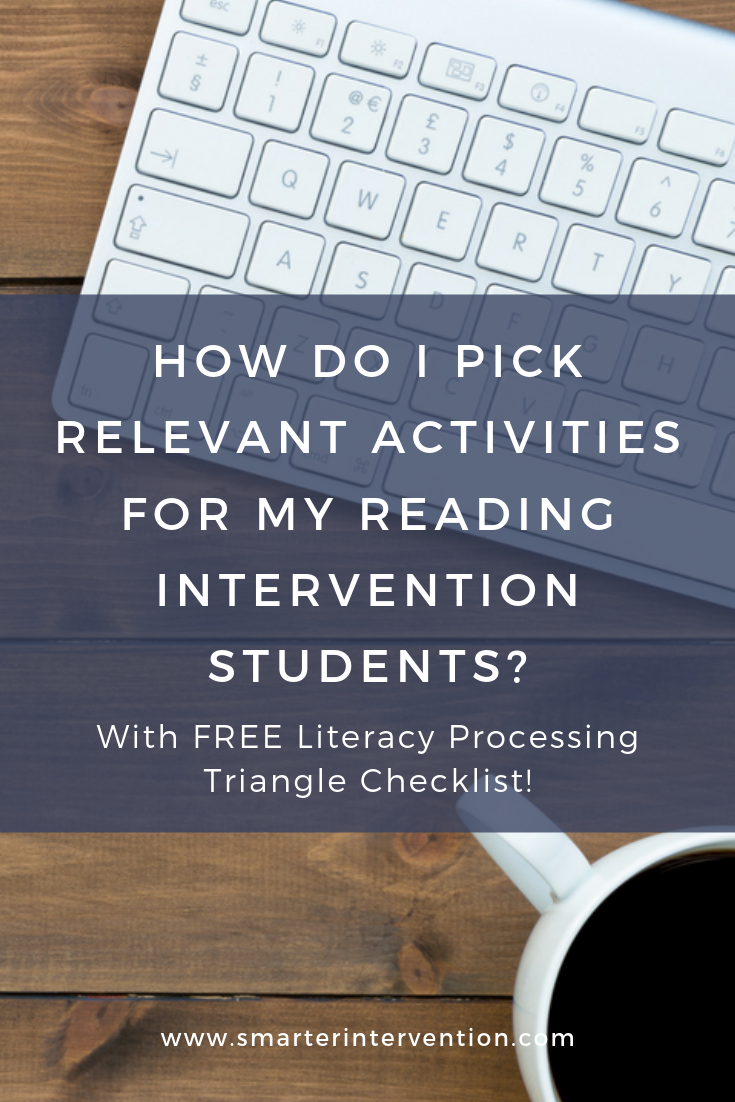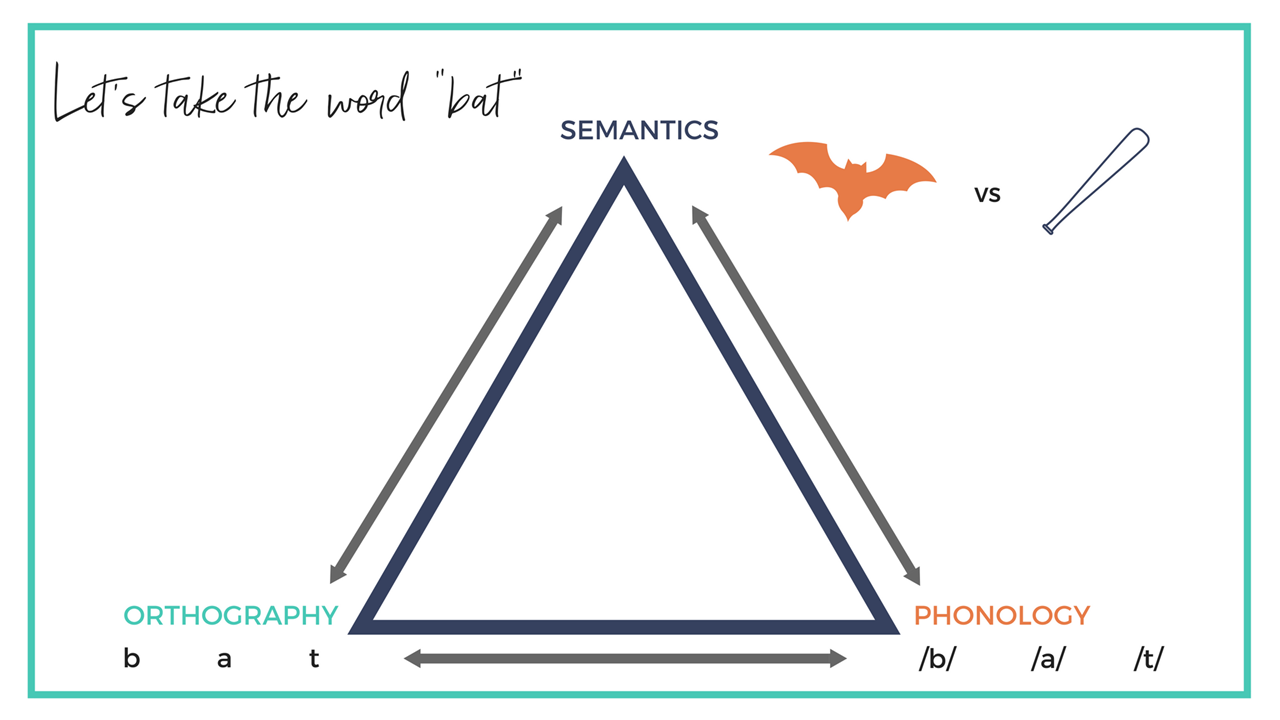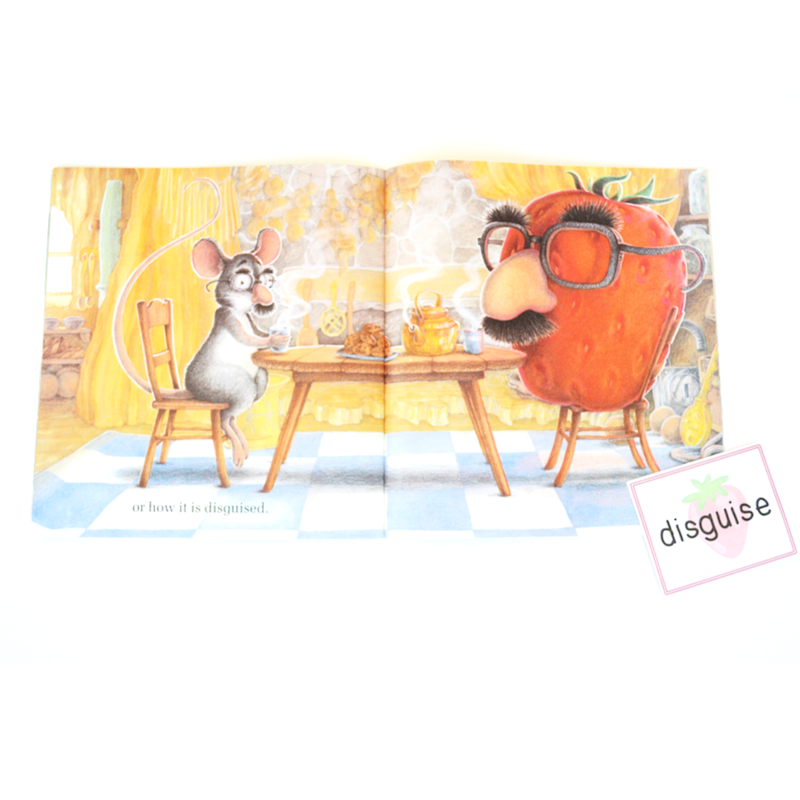How Do I Pick Relevant Activities for My Reading Intervention Students?
Picking Relevant Reading Intervention Activities…
So this can be one of the most challenging things we face as interventionists - what activities do I pull to target specific weaknesses for my struggling readers? And how can I do that without spending a TON of extra time that I don’t really have?
We all want the very best for our students, it’s our mission and our goal to provide the best possible instruction to help completely eliminate reading and spelling gaps. However, we know that it can be EXCEEDINGLY DIFFICULT to find just the “right” activities that will close up those gaps for each individual student without spending hours upon hours of time trying to pull it all together.
In order to truly meet the individual needs of your students (or your child if you are a parent of a struggling reader) you want to be thinking about where the most pressing gaps are falling. We break this up into 3 sections. Phonology, Orthography, and Semantics. Let’s dive in here a bit…
Students can struggle in any of the “bases” or “points” of the triangle. They can also struggle to make connections between the points. When students struggle with literacy acquisition - they typically struggle with pairing the picture of the letter to the letter name (orthography), they struggle to identify the individual sounds within words (phonology), or they struggle with tying meaning to specific words (semantics).
If your student struggles with Phonology (the sound structure of the language)
1. Add phonemic awareness tasks to your instruction
The best thing about adding in phonemic awareness instruction is that you don’t technically have to prep anything. You can - and this can be fun and awesome, but you don’t have to! This can all be done orally. You can have students pick words and then play with the words. It might look something like this.
You - “Sally, pick a word.”
Sally - “trash”
You - “Great, tell me all the sounds you hear in the word trash.”
Sally (or another student) - “/t/ /r/ /a/ /sh/”
You - “Perfect, say “trash” without the /r/ sound.”
You can go on adding and changing parts of words and even think of creative ways to keep this engaging. For example, you can tally “points” for each way the word can change sounds to make new words. Or play with silly nonsense words in the instance they give you a word like “orange” to manipulate. For more phonology-based activities, check out “A Fun Way to Support Phonological Awareness at Home” and “Phonemic Awareness & Phoneme Segmenting for Older Students.”
2. Practice holding sounds in memory
You can practice this with sounds that will create words or not. It might look something like this:
You - “I’m going to give you a group of sounds I want you to hold in your mind. Once I am done, I want you to repeat them back to me. Are you ready? /m/ /i/ /s/ /t/.
Student - /m/ /i/ /s/ /t/
The idea here is that you don’t necessarily want them to blend the sounds together to give you the word. Just repeating back the sounds. You can give them sounds that don’t create a word at all to help keep them from providing back the word to you. This makes a great working memory task and can be built right into your auditory drill instruction.
3. Teach your students (or your child) Pig Latin as a Phonemic Awareness Task
Oh my goodness this is HARD and they LOVE it. It’s such an amazing way to get them bought into practice.
Orthography (the Print structure of the language)
1. Have your student practice letter matching or word matching under a time constraint
This is an amazing way to get the brain to recognize letters and pattern matches more fluently. You give your child or student a time limit and ask them to “find all the Bs” as quickly as they can. The amazing thing about this is that it doesn’t have to be complicated. Take a past worksheet or homework and give them this task. You don’t necessarily need to create anything new!
2. Practice handwriting
I know this is a lost art. With everything else that needs to be covered in the classroom, this is one that typically gets pushed to the side in favor of more “pressing” tasks if you will. However, focusing on the handwriting of each letter helps to form a more solid neural connection to the letter, and in practice, this connection will get faster and more automatic.
3. Make letter recognition FUN!
One fun thing to consider (especially if you are in a small group or 1:1 setting) is to make a game out of letter recognition. One way you can do this is to put a tricky letter on a sheet of paper (we are thinking of those commonly reversed or transposed letters like lowercase B, D, P, Q). Get 10-15 sheets of paper then flash them to the student quickly and see if they can tell you what letter they saw. Add up points for each letter they get correct! Or consider something like tic-tac-toe how easy is that?
Semantics (Meaning of Words)
Our end goal, of course, is always comprehension. We need to make sure that not only are our students decoding appropriately but that they are thinking about the meaning of the words as they are reading so they can begin to recognize when a word is impeding comprehension and/or when they may have misread the word entirely.
1. Have students practice reading a list of words and identifying real words versus nonsense words.
This is great for two reasons!
It helps tease out visual memory for words versus true phonetic decoding
It helps you to understand where the students are vocabulary-wise. If you ask them to circle the nonsense words and they circle a real word - there is your opportunity to teach the new vocabulary. If they miss circling the nonsense words you can correct any potential confusion or determine if the student has poor self-monitoring. All kinds of gold in this one!!!
2. Use actual books your students know and enjoy at their level to discuss vocabulary.
We love using authentic literature in our intervention! Big Hungry Bear is a favorite for our early elementary kiddos because there are so many great words we can talk about. We love previewing the vocabulary ahead of time. Our older students love Frindle or Hatchet and we preview vocabulary in the same way across all levels.
If we are just reading aloud and haven’t previewed the book ahead of time (hey we’re all human) we simply stop when we come to a word that may be challenging and ask what it means.
3. Have students identify multiple meanings of words.
We have tons of words with multiple meanings - think of the word “jam.” How can we use “jam” as a noun, verb, and adjective? What about “rock?” This is a fun activity to get students really thinking. You can take it a step further by asking them to write about it!
That’s it! Determine where on the literacy processing triangle your students are struggling and then determine which types of activities you can add to support their progress and speed up their response to intervention.
To help you out we’ve created a checklist of common difficulties and where they fall on the literacy processing triangle. This has been SUPER helpful for us and our members in getting our struggling readers onto grade level. >>Click here<< to download the literacy processing triangle checklist AND if you are looking for data tracking tools, be sure to grab our free Data Tracking System. This tool will help make data tracking easy and help you keep your session data organized.




